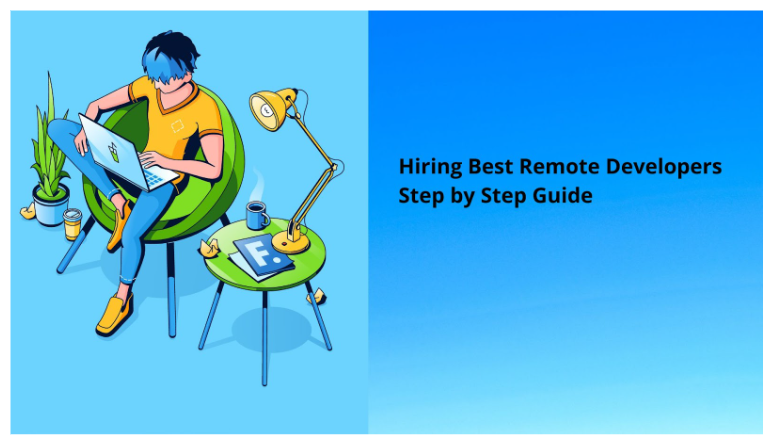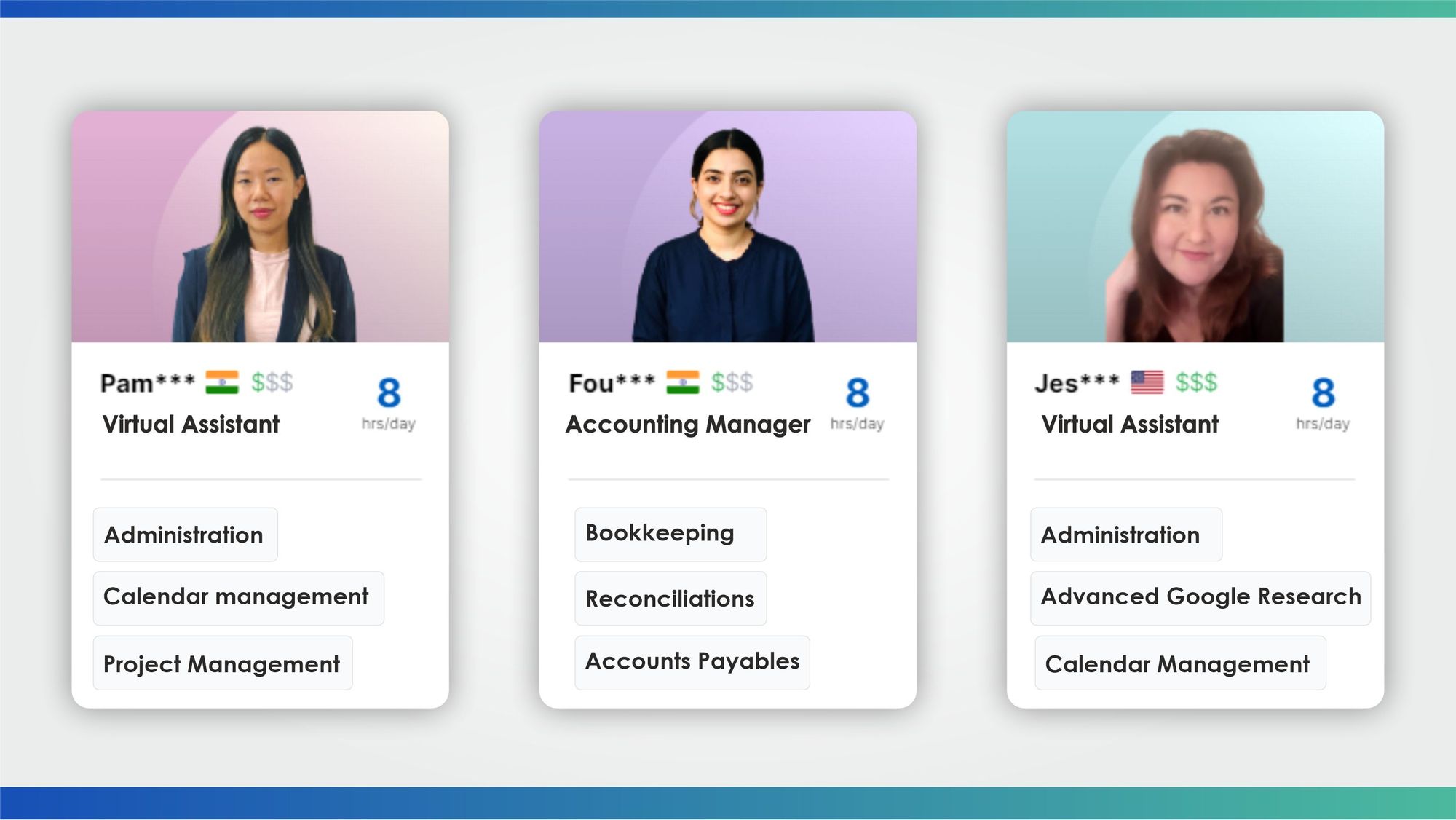Hiring Best Remote Developers Step by Step Guide
Any great app product is the direct result of the input of an excellent developer team. Yet, for many years now, hiring an in-house development team has taken the backseat, as most app projects across all sizes and niches have begun to rely on outsourcing.

Any great app product is the direct result of the inputs of an excellent developer team. Yet, for many years now, hiring an in-house development team has taken the backseat as most app projects across all sizes and niches have begun to rely on outsourcing.
According to credible studies, by the time we reach 2028, a whopping 73% of all development teams will be made of remote developers. So hiring remote developers is a phenomenon no company can stay aloof from.
In some parts of the world, outsourcing IT projects is the sole driving force behind the growth of the IT sector. For example, a vast talent pool, highly competitive rate, and proficiency in the English language gave Indian developers an edge over others. In addition, businesses worldwide prefer to hire remote developers in India because of the professional and expert developer resources available for different skills and technologies.
Hiring remote developers is also beneficial for companies looking for specialized skills that locally they aren't able to afford or find. When you look in other places, you'll expand your talent pool, being able to access niche skills easily, says Sharon Koifman, CEO and Founder of DistantJob, an IT remote recruitment agency. "I've worked with companies with the financial resources to hire senior-level engineers, but they're looking for specific skills. They end up scouting for developers in places where those IT skills are particularly prominent."
Through this blog post, we will provide a detailed step-by-step guide to hiring remote developers. But we will start by explaining the advantages of remote hiring first.
Key-Value Propositions of Remote Hiring
For years remote hiring helped many companies get on board the skilled developer resources they need for their software development projects. There are multiple advantages of remote outsourcing, from accessing a large talent pool to having competitive cost advantages to having access to the advanced IT infrastructure of reputed companies.
"Lower cost of development is no longer the single most important driving factor for companies to hire remote developers," says Juned Ghanchi, CEO of IndianAppDevelopers, a reputed IT outsourcing company from India. "When starting my career as a software developer, I received the best career opportunities through remote projects. Today, I see the same scenario is unfolding for countless developers who work for us remotely", he reiterated.

So, remote hiring has its benefits for both employers and employees. Let's have a look at these benefits of remote hiring.
Benefits of Remote Hiring for Employers
- Access to a large pool of experienced developer talents across various development skills is the most significant advantage of hiring remote developers.
- Access to the advanced IT infrastructure of the remote development company without spending a dime on in-house IT infrastructure is another crucial advantage.
- The competitive hourly rate of developers for various software development projects is another crucial benefit.
- Another vital advantage is accessing remote markets by engaging developers in the target country.
- Flexibility and freedom for remote workers to engage with the app projects as per their schedule and convenience often result in better productivity.
- The capability to scale up the size and skills of the development team by hiring developers from other countries is often cited as a key advantage of remote hiring.
Benefits of Remote Hiring for Employees
- Optimum work satisfaction through flexible timing and avoiding daily commutes is a significant advantage of remote hiring.
- Remote developers working primarily on a contractual basis are monitored more closely for their inputs and remain more accountable than the in-house developers.
- When remote developers work alongside in-house developers, the entire project needs to adhere to time-zone-specific requirements resulting in a more organized workflow and better productivity.
- Thanks to remote hiring, developers have wide-open career opportunities and exposure across all types of app projects and companies of different stature.
Critical Steps in Hiring Remote Developers for Your App Project
Hiring the best remote talents per your project requirements will not be easy unless you adhere to the proper procedures and measures tested, which have been tried across diverse app projects. Let us explain the key steps in hiring remote app developers for your app project.
Step 1: Create a Project Requirement Document
Though this step is not particularly related to remote hiring, it is essential to have a clear picture of the entire project starting from the required technologies, developer skills, and IT infrastructure. Only when you have a meticulous project requirement document explaining all these aspects in detail can you step ahead to hire the necessary developer resources.
Step 2: Create a Detailed Job Description
Now you need to write down a detailed job description of the developer candidate you will hire for your app project. The job description should cover the following attributes.
- Pen down the title by using straightforward, professional job titles like React Native developer, MEAN full stack developer, DevOps developer, etc.
- Now write down a detailed description of the expected job roles, responsibilities, and development tasks to take care of.
- Now provide the remuneration and benefits for the job title in question.
- You must now mention all the job title's technical skills, soft skills, and expected experience levels.
- At last, you must mention the company's mission and clear goals.
Step 3: Publish the Job Requirement
Now to make your job listing visible to a broader pool of talents, you need to publish the same on multiple platforms and channels. For example, you can hire outsourcing agencies published in major online job boards such as Lensa, LinkedIn, indeed, Glassdoor, etc., post in freelance marketplaces like freelancer.com, and post on your social media channels.
Step 4: Evaluate the Portfolio of a Particular Developer
Even though you have shortlisted some reputed development companies for hiring their developers, you need to check and evaluate the portfolio of projects for each developer before deciding to take them on board. Instead of just being overwhelmed by their mentioned platforms and projects, get into the timeline, project details, and roles and responsibilities in those projects.
Step 5: Initial Interview
After shortlisting all potential developer candidates, it is time to take their interviews. It is always advisable to take interviews of remote developers by using video chat tools such as Zoom, Google Meet, or similar tools.
In the initial interview, evaluate the positive curiosity of the developers in your company's vision for the project, aptitude and communication skills, career vision and attitude towards the job, the development methodologies and software skills they are versed with, etc.
Step 6: Technical Assessment
Once the initial interview covering the basic and soft skills is over, it is time to make a thorough technical assessment of the candidate. In technical interviews, mainly the key skills and previous projects are discussed in detail. A pair programming session or job simulation follows such an interview to evaluate all the skills further. In the technical interview, the experience and skills of the developers in using various developer tools and collaboration tools are also tested.
Step 7: Pair Programming Session
A test programming project is created through this collaborative programming session for the technical head and the respective candidate to work together. In addition, there are specific tools like DevSkiller that help with this programming session.
Through pair programming, the company can evaluate the coding skills, problem-solving skills, and commands on different tools. All the candidates' questions during this project also show their technical depth.
Step 8: Making the Offer
As soon as the pair programming session is over, your technical team can take a final call on the candidate. Once the technical team gives the final nod, you can make the formal job offer to the candidate. In many cases, companies like to hire remote Assistant developers initially for a stipulated trial period with a committed salary. Then, after evaluating the performance in this trial period, the respective developers are given an extension for the entire project.
For making a sound offer, you must take care of creating a legally legitimate contract. That is specifically crucial when hiring remote developers from other countries. In addition, you need to take care of respective tax rules, healthcare, and other deductions in the contract document.
Step 9: Onboarding
Once the hiring process is complete, it is vital to provide a great onboarding experience to the new developers. But, first, you have to deliver the right communication avenues for the remote employee to stay in constant touch.
Providing an introductory training session to orient the new developer with the company's vision and goals and the particular app project can also be beneficial. Lastly, delegate an in-house employee responsible for all day-to-day communication with the employees.
Conclusion
So, remote hiring of skilled resources is not as difficult as it seems by following the tested and tried steps and measures mentioned above.
Remember, cost considerations should come at the fag end when all other criteria are fulfilled. You can only go for the cost-competitive option among the experienced and skilled resources.
